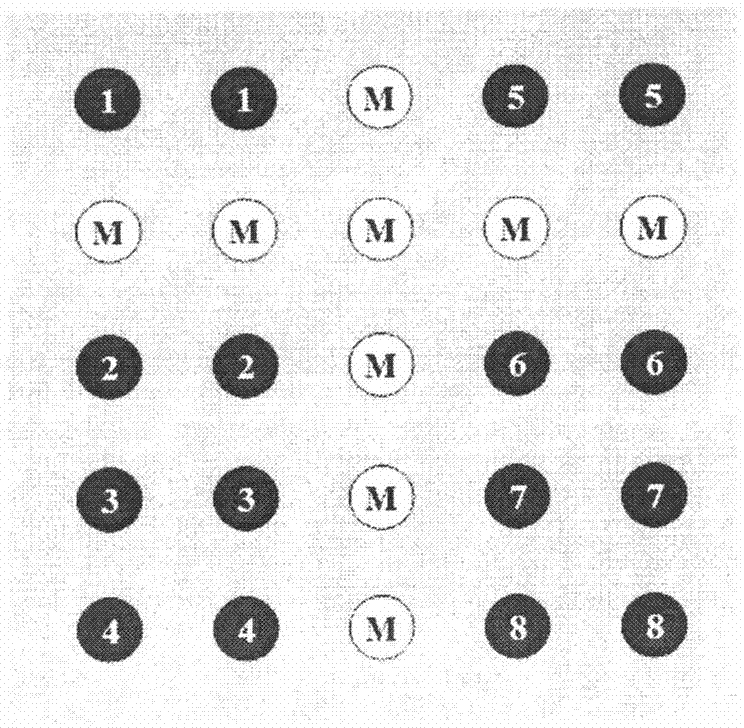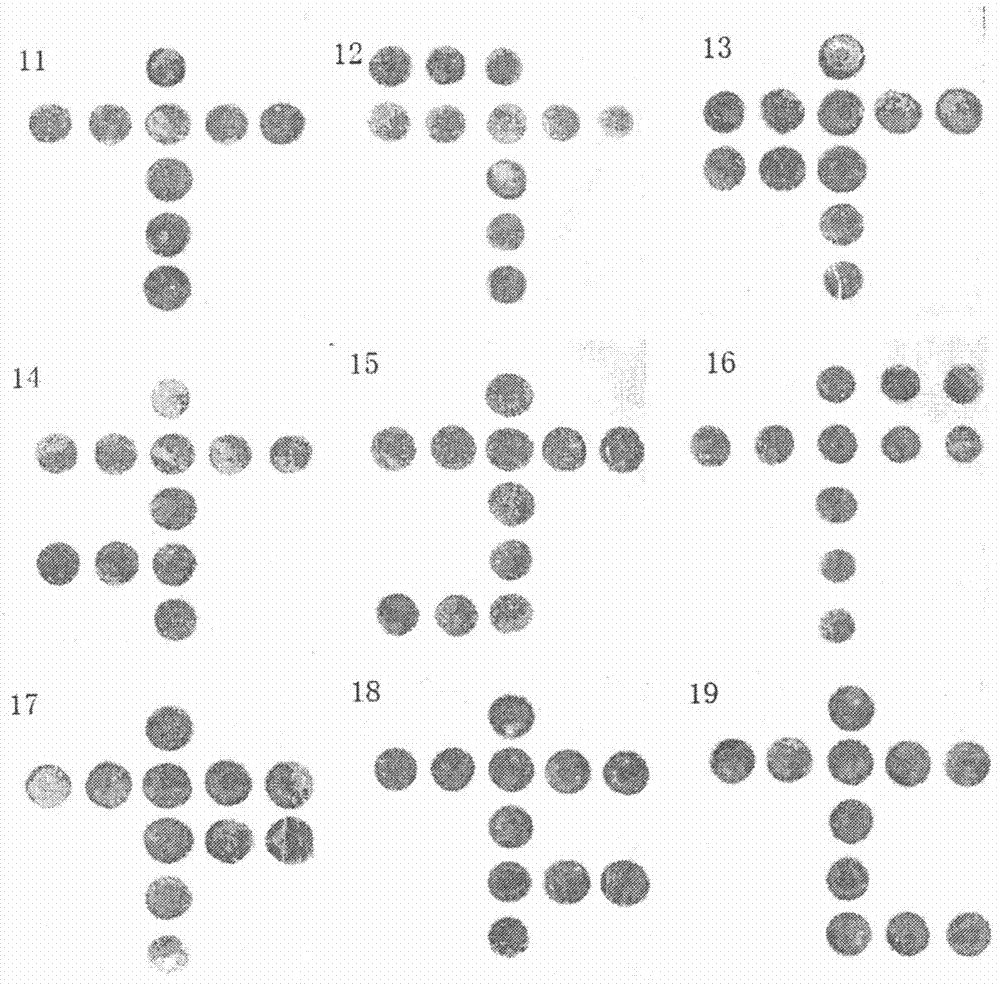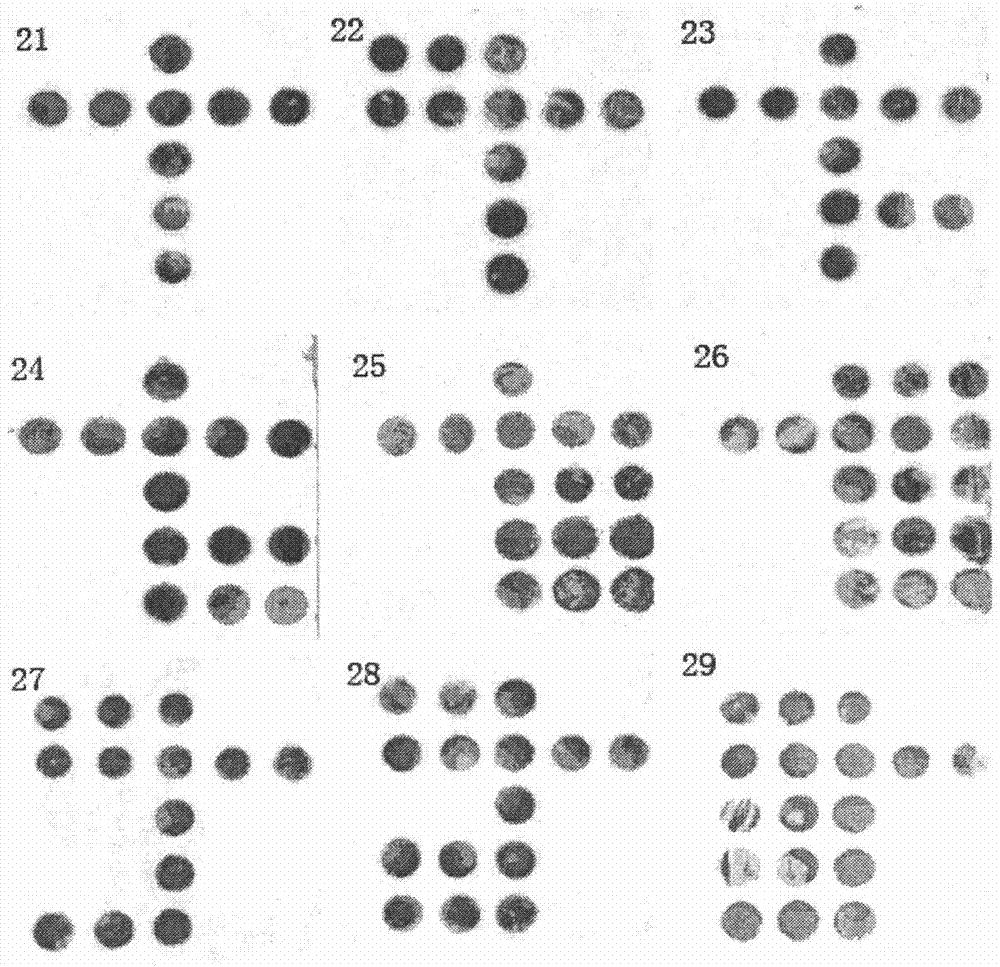Visible chip-based method for detecting food allergens
A detection method and allergen technology, which is applied in the field of food allergen detection based on visual chips, can solve the problems of not covering food allergens, complex components, and missed detection of detection kits, so as to save time, the method is simple and fast, cost reduction effect
- Summary
- Abstract
- Description
- Claims
- Application Information
AI Technical Summary
Problems solved by technology
Method used
Image
Examples
Embodiment 1
[0046] Eight kinds of foods including soybean, wheat, cashew nut, peanut, milk, egg, fish and shrimp were selected as test samples.
[0047] According to the above-mentioned steps, the DNA of the above-mentioned 8 kinds of foods was subjected to multiplex PCR amplification with the primers shown in Table 1, and the multiplex PCR amplification products were hybridized with the visible film sensor chip prepared according to the above-mentioned steps, and the Bacterial water was used for blank control experiment, and the reaction results were as follows: figure 2 shown.
[0048] The signal point with the same brightness as the positive control was used as the specific reaction mark, and the signal photo was visualized through the hybridization results of the 8 food allergens ( figure 2 ) It can be seen that the positive control points are arranged in a cross-shaped pattern according to the experimental design, and the target probes all present obvious signals, which can be cle...
Embodiment 2
[0050] Take 9 pieces of visible thin-film sensor chips ordered according to the above method, use single DNA of cashew nuts and shrimp, mixed DNA of soybeans and cashew nuts, mixed DNA of milk and shrimp, mixed DNA of soybeans, cashew nuts and wheat, and mixed DNA of milk, shrimp and fish DNA, mixed DNA of milk, shrimp, fish and eggs, mixed DNA of soybean, wheat, peanut and cashew nuts as templates, multiplex PCR amplification with 8 pairs of primers shown in Table 1 as primers, and chip hybridization of PCR amplification products Experiment, and blank control experiment with sterilized water, the results are as follows image 3 shown.
[0051] It can be seen from the visual signal photos of the hybridization results that the positive control points are arranged in a cross-shaped pattern according to the experimental design, and the target probes also show obvious signals, which can be clearly distinguished from the background. Under the double assurance of PCR product specif...
Embodiment 3
[0053] Utilize the multiplex PCR method as described in embodiment 2 to buy 5 kinds of foods in the supermarket (Yana white chocolate strawberry granola bar, Orion crispy chocolate, rooster straight spaghetti, Swiss triangle dark chocolate and tempeh dace) Perform amplification, hybridize the multiple PCR amplification products with the chip, and conduct a blank control experiment with sterilized water to verify the accuracy of the food label.
[0054] Among the 5 types of food, 4 types contained milk components, 4 types contained wheat components, 3 types contained soybean components, 1 type each contained fish and egg components, and 1 type contained trace amounts of nuts.
[0055] A variety of PCR amplification products were hybridized with the chip, and sterilized water was used instead of template DNA as a blank control. Experimental results such as Figure 4 As shown, the results show that the target probes all present obvious signals, which can be clearly distinguished...
PUM
 Login to View More
Login to View More Abstract
Description
Claims
Application Information
 Login to View More
Login to View More - R&D
- Intellectual Property
- Life Sciences
- Materials
- Tech Scout
- Unparalleled Data Quality
- Higher Quality Content
- 60% Fewer Hallucinations
Browse by: Latest US Patents, China's latest patents, Technical Efficacy Thesaurus, Application Domain, Technology Topic, Popular Technical Reports.
© 2025 PatSnap. All rights reserved.Legal|Privacy policy|Modern Slavery Act Transparency Statement|Sitemap|About US| Contact US: help@patsnap.com



